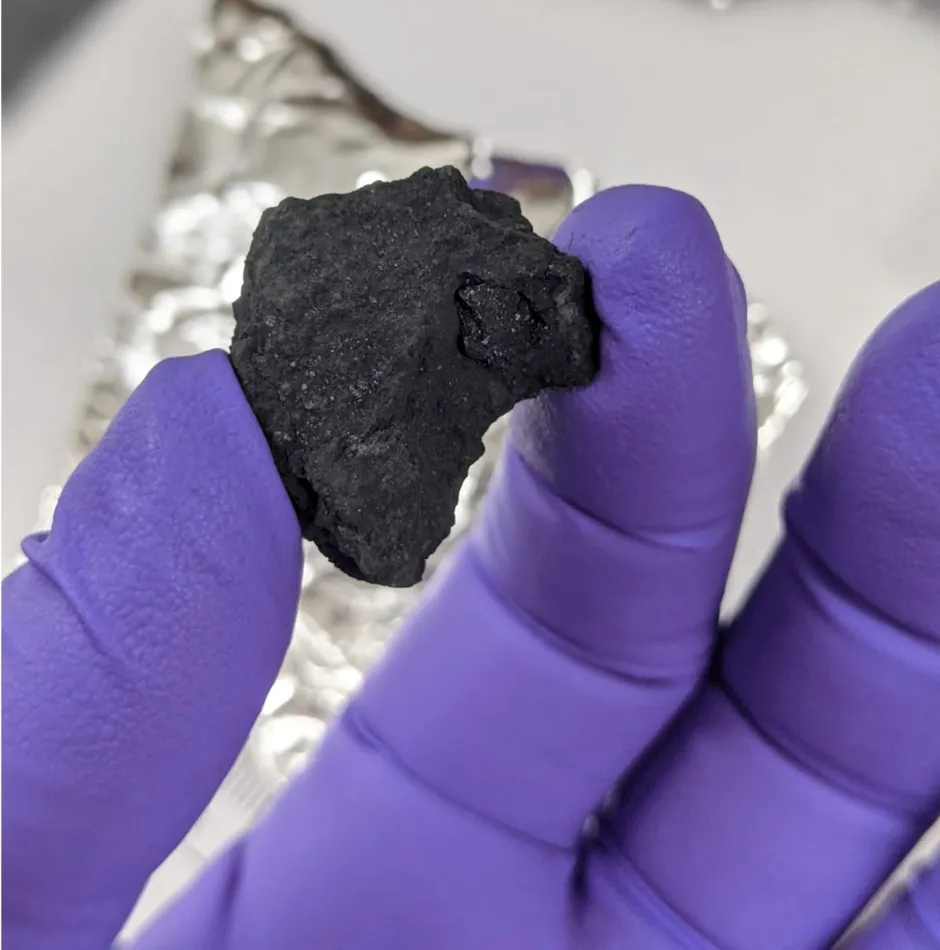A meteorite that fell from the fireball that lit up the sky over the UK and northern Europe in February has been found and identified as a type which has never fallen anywhere in Britain before.
Fragments of the fireball have been located in Winchcombe, Gloucestershire, and are now in the care of museum scientists.
The meteorite, likely to be known as the Winchcombe meteorite, is an extremely rare type called a carbonaceous chondrite.These have been known to contain organics and amino acids – ingredients for life.The meteorite will be the target of an unprecedented research effort providing answers to questions about the early history of the Solar System and life on Earth.

Footage of the fireball from the public and the UK Fireball Alliance camera networks helped locate the meteorite and determine from where it came.Almost 300g of the rare meteorite survived its fiery passage through the Earth’s atmosphere and landed on a drive.Other pieces of the meteorite have now been recovered in the local area after it was spotted on 28 February.
The original space rock was travelling at nearly 14km/s before hitting the Earth’s atmosphere.Experts say the meteorite was retrieved in such a good condition, and so quickly after its fall, that it is comparable to the samples returned from space missions – both in quality and quantity.
Read more about space rocks:
- How do we predict meteor shower intensity?
- How can we tell that a meteorite has come from a particular planet?
Dr Ashley King, from the department of Earth sciences at the Natural History Museum, was among the first on the scene when the meteorite was discovered and has been advising on the handling and care of it since.
“Nearly all meteorites come to us from asteroids, the leftover building blocks of the Solar System that can tell us how planets like the Earth formed," he said.“The opportunity to be one of the first people to see and study a meteorite that was recovered almost immediately after falling is a dream come true.”
Dr Richard Greenwood, research fellow in planetary sciences at the Open University, was the first scientist to identify and advise on the meteorite.
“I was in shock when I saw it and immediately knew it was a rare meteorite and a totally unique event," said Greenwood.“It’s emotional being the first one to confirm to the people standing in front of you that the thud they heard on their driveway overnight is in fact the real thing.”
A team of specialist scientists from across the UK have been searching the rest of the predicted fall area for more fragments, including teams from the University of Glasgow, the University of Manchester, the Open University, the University of Plymouth and Imperial College London.
There are approximately 65,000 known meteorites on Earth. Only 1,206 have been witnessed falling, and of these only 51 are carbonaceous chondrites.
This is the first known carbonaceous chondrite to have been found in the UK, and the first meteorite recovered in the UK in 30 years, researchers say.
Reader Q&A: How often do large meteorites hit the Moon?
Asked by: Jenny Smith, Peterborough
The Moon is constantly being bombarded with meteorites, but most of them are no bigger than specks of dust. Larger impacts have been observed regularly over the years. In February 2014, Spanish astronomers recorded the impact of a meteorite weighing about 400kg. It was travelling at about 64,374km/h (40,000mph) and probably resulted in a crater 40m wide. Just six months earlier a NASA telescope spotted the impact of a 40kg object. However, the actual yearly rate of these impacts is unclear because astronomers have not yet observed enough of them.
Read more:
